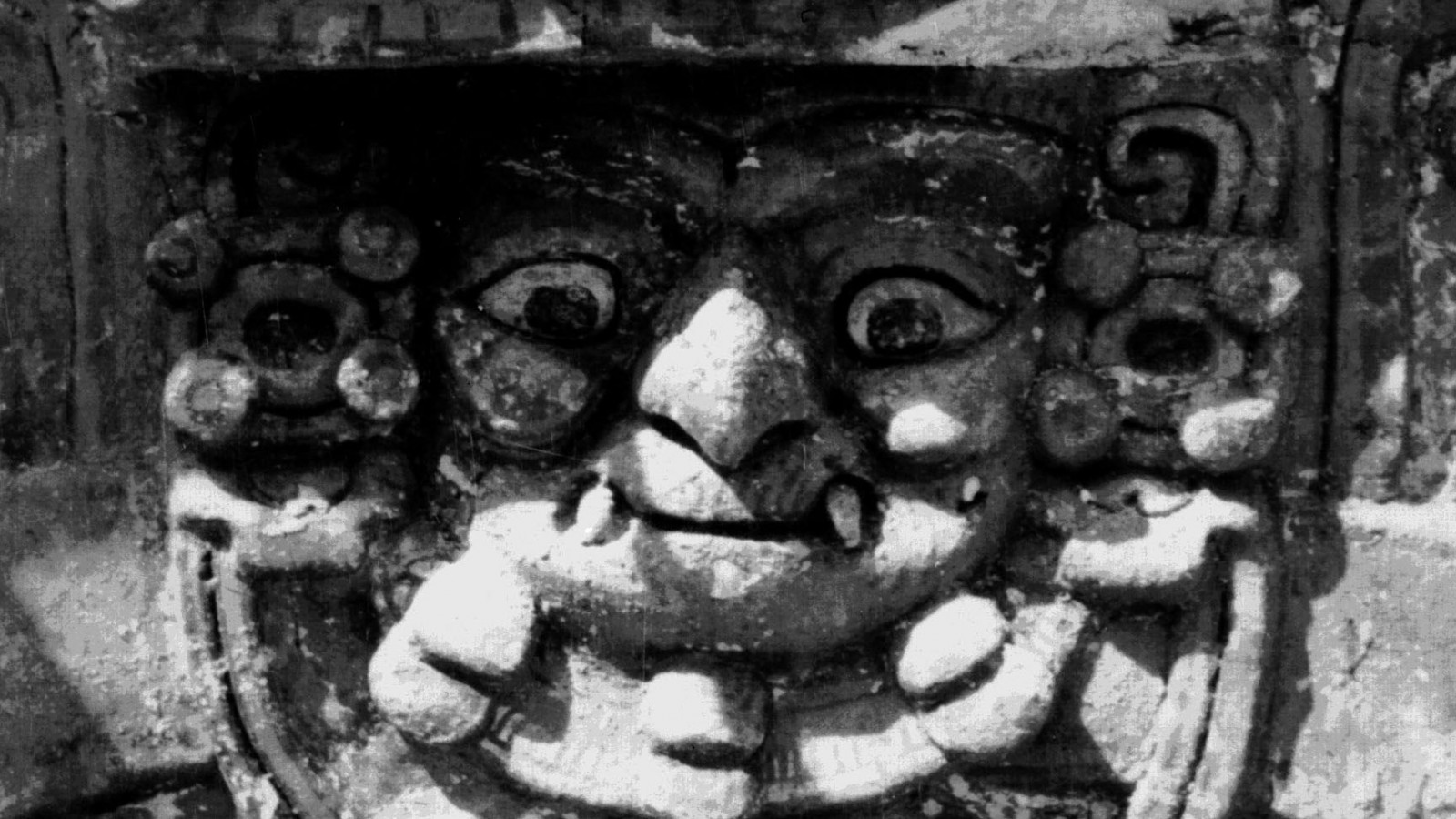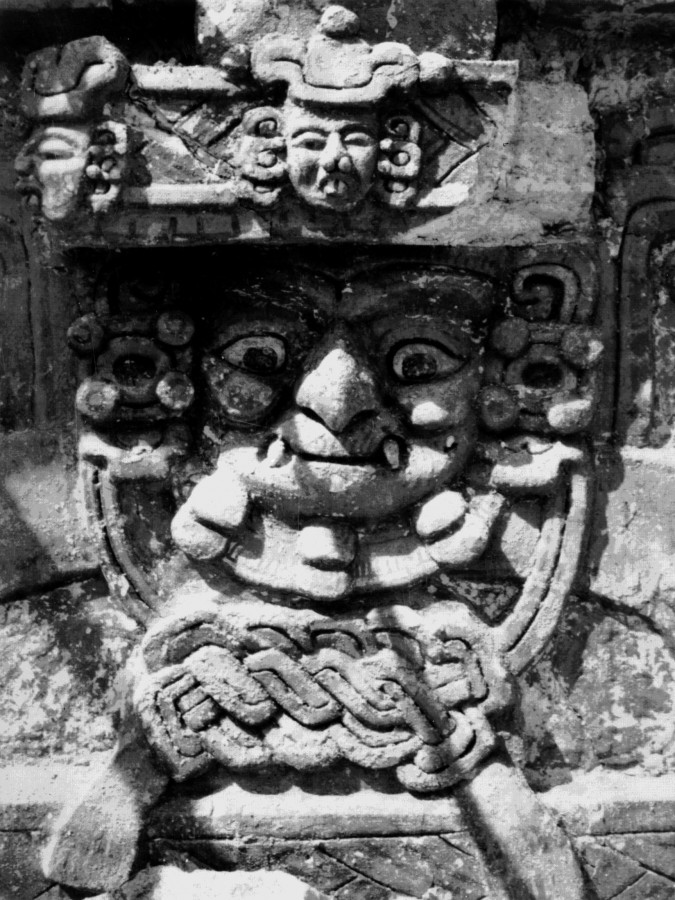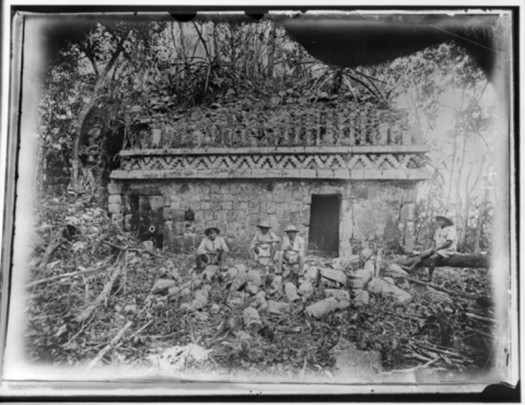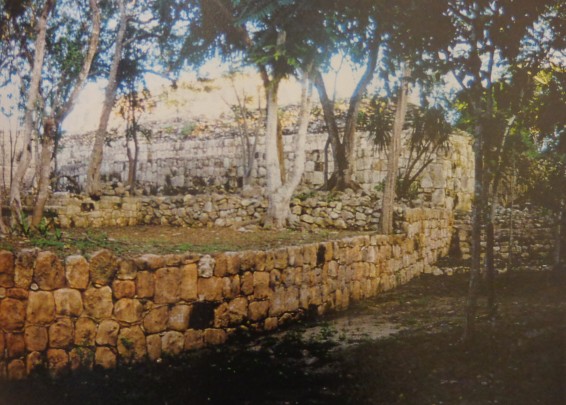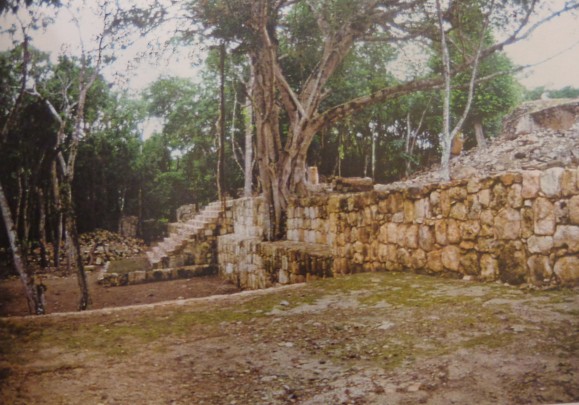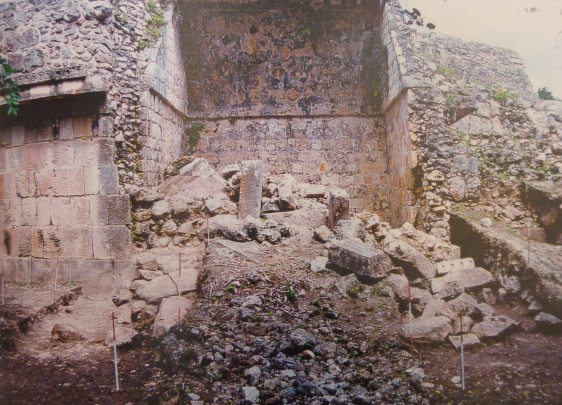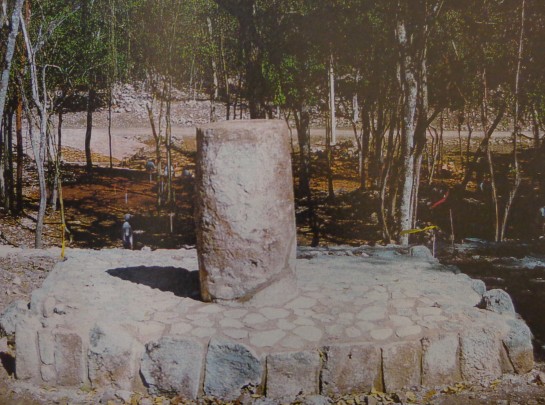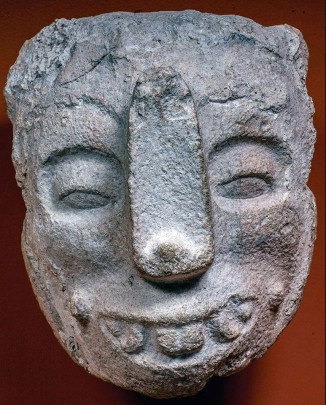Chacmultún
Hill of red stone
In Chacmultún, the stone slabs contain microorganisms, which when exposed to air and water acquire a reddish hue. This colors the Mayan temples, built in the exquisite Puuc style and carved like filigree. The site flourished between 800 and 1000 AD and was a crucial link between neighboring cities.
About the site
The pre-Hispanic settlement of Chacmultun, meaning red stone hill in Maya, is close to the eastern end of the Puuc archeological region in the north of Yucatan. The site occupies a valley on the edge of the Bolonchen district 81 miles south of Merida and 4 miles southwest of Tekax.
The center of Chacmultun is defined by three complexes of ancient buildings described as "palaces," which sit on hills slightly less than 100 feet high. These run alongside the kancabal, or area of red stone, which is just over 1,000 yards in length from east to west and nearly 400 yards wide from north to south. This central area has a group of structures including a ballcourt, which is rare because courts of this type are hardly ever found in Puuc sites. This group of constructions has the largest dimensions and also contains a great variety of architectural icons, including the well-known humanist murals.
Since the site is in a forested region, it has been established that Chacmultun developed and grew through the exploitation of natural resources which were used in the palaces for the production of amate paper and other textile products. It has also been considered that these buildings could have functioned as warehouses for forest products gathered in the region, and which were then redistributed for consumption.
The first settlements related to this site date to the Preclassic period (1900-1200 BC) and were small hamlets which depended on seasonal streams and natural water deposits which appeared in the district. This wealth of water resources, soon complemented by chultuns or cisterns and other storage and irrigation works, allied with population growth, led to more intensive agriculture and complex social organization. During the Postclassic (900-1521) Chacmultun was the most important city in the eastern Puuc region on account of the substantial movement of tradable goods, although it was left uninhabited in 1500.
It was discovered in 1875 by the Austrian Teobert Maler, a former captain of Emperor Maximilian. He was a great explorer and an early photographer of Mayan ruins, accumulating an extraordinary photographic collection which is today divided between Mexico, the United States and Europe. Over the years he became an expert in the Mayan world.
Excavations led by the INAH began in 1970 and uncovered fine constructions in the best Puuc style with a ballcourt and even the remnants of mural paintings. These highlights and other features can be seen in the four areas of the ancient city known as Cabalpak (sunken terrace), Xetpool (severed head), the central area and Chacmultun itself.
The center of Chacmultun is defined by three complexes of ancient buildings described as "palaces," which sit on hills slightly less than 100 feet high. These run alongside the kancabal, or area of red stone, which is just over 1,000 yards in length from east to west and nearly 400 yards wide from north to south. This central area has a group of structures including a ballcourt, which is rare because courts of this type are hardly ever found in Puuc sites. This group of constructions has the largest dimensions and also contains a great variety of architectural icons, including the well-known humanist murals.
Since the site is in a forested region, it has been established that Chacmultun developed and grew through the exploitation of natural resources which were used in the palaces for the production of amate paper and other textile products. It has also been considered that these buildings could have functioned as warehouses for forest products gathered in the region, and which were then redistributed for consumption.
The first settlements related to this site date to the Preclassic period (1900-1200 BC) and were small hamlets which depended on seasonal streams and natural water deposits which appeared in the district. This wealth of water resources, soon complemented by chultuns or cisterns and other storage and irrigation works, allied with population growth, led to more intensive agriculture and complex social organization. During the Postclassic (900-1521) Chacmultun was the most important city in the eastern Puuc region on account of the substantial movement of tradable goods, although it was left uninhabited in 1500.
It was discovered in 1875 by the Austrian Teobert Maler, a former captain of Emperor Maximilian. He was a great explorer and an early photographer of Mayan ruins, accumulating an extraordinary photographic collection which is today divided between Mexico, the United States and Europe. Over the years he became an expert in the Mayan world.
Excavations led by the INAH began in 1970 and uncovered fine constructions in the best Puuc style with a ballcourt and even the remnants of mural paintings. These highlights and other features can be seen in the four areas of the ancient city known as Cabalpak (sunken terrace), Xetpool (severed head), the central area and Chacmultun itself.
Did you know...
- Chacmultun covers an area of 250 acres.
- Many buildings were constructed on plinths up to 26 feet high, hence their monumental size.
Practical information
Monday to Sunday from 08:00 to 17:00 hrs.
$75.00 pesos
Se localiza a 130 km al sureste de la ciudad de Mérida, Yucatán.
From the city of Merida, take federal highway 180 towards Tekax. From there take the road to Canek and Kancab. The site is two kilometers further on.
Services
-
+52 (999) 913 4034
-
This email address is being protected from spambots. You need JavaScript enabled to view it.
Directory
Director de la Ruta Pucc
José Guadalupe Huchím Herrera
This email address is being protected from spambots. You need JavaScript enabled to view it.
Administrador del Centro INAH Yucatán
Felipe de Jesús Flores Laguna
This email address is being protected from spambots. You need JavaScript enabled to view it.
+52 (999) 913 4034, ext. 398006

